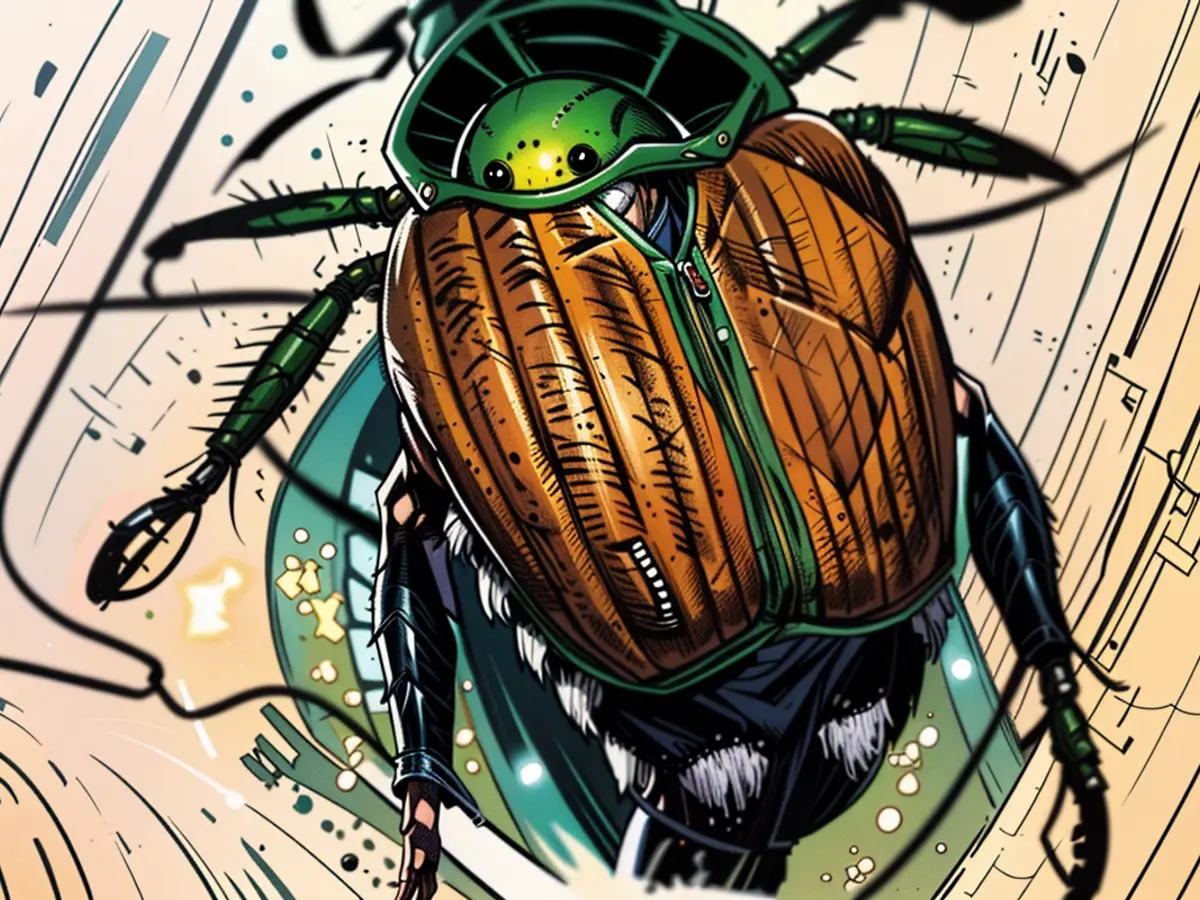Invasive species - Japanese beetle found in Basel - Southwest acts
An Asian beetle falls like a biblical plague over orchards, vineyards, forests, green areas, and gardens in Germany and causes damage to everything: After several findings of the harmful Japanese beetle in Basel, the situation has become serious for Baden-Württemberg, according to the Landwirtschaftliches Technologiezentrum Augustenberg in Karlsruhe. First measures are being taken. In some border regions in South Baden, additional beetle traps are being set up, monitoring is being intensified, and only green goods can be taken out of the buffer zone if it is ensured that no beetles are transported.
Buffer zones against the pest
The European Union has classified the Japanese beetle (Popillia japonica) as a pest that can cause significant damage. The animal is subject to reporting in Switzerland and the EU. In a one-kilometer radius around beetle findings, a contaminated zone is designated, and in addition, a buffer zone of five kilometers. According to the Landwirtschaftliches Technologiezentrum, this buffer zone includes parts of the communities of Grenzach-Wyhlen and Weil am Rhein (District of Lörrach). The goal: prevent females from laying eggs.
A population in Basel?
A few days ago, the Plant Protection Service in Basel found several Japanese beetles in baited traps at two locations. About a year ago, the first population of the imported pest was discovered north of the Alps, near Zurich and about 15 kilometers from the German border. The Japanese beetles in Basel are now, according to the Landwirtschaftliches Technologiezentrum, the second population on the northern Alpine side - right at the gates of Baden-Württemberg.
Monitoring with baited traps
The Plant Protection Service has installed 55 baited traps along the main transport routes in Baden-Württemberg for the monitoring of the Japanese beetle. Since 2022, the city area of Weil am Rhein has been monitored with 12 baited traps. One beetle was caught in each of the traps in 2022 and 2023. It is assumed that the animals were transported with vehicle traffic from Italy or Tessin.
Leafless branches and brown patches
The foreign Japanese beetle reportedly has great potential for damage to fruit and plant cultivation, as well as for forests and house gardens. According to experts, the leaves of trees are often left with only the veins remaining; plants are significantly weakened or can die. Large damages can also be caused by the larvae on meadows and lawn areas: The Japanese beetle larvae feed on grass roots and leave brown patches with dead plants.
Mistaken for the rose chafer or the larger rose chafer is possible
The Japanese beetle is only about one centimeter long, has a metallic glossy green head and brown wings. Notable are five white hair tufts on each abdominal segment and two white hair tufts at the end of the abdomen. The Japanese beetle is often confused with the garden chafer or the larger rose chafer - native species that, according to experts, do not cause significant damage.
Everyone must help out.
To prevent the settlement of Japanese beetles, the experts are relying on the help of the population: If such a beetle is spotted, it should be caught, frozen, and photographed. The photo should be sent with the location indicated to: [email protected].
Invasive species usually have no natural enemies here. Therefore, they can cause significant damage.
- The harmful Japanese beetle, initially discovered near Zurich in Switzerland, has now become a concern in Baden-Württemberg after numerous findings in Basel.
- In an effort to control the spread of the beetle, additional traps are being set up in border regions of South Baden, particularly in communities like Grenzach-Wyhlen and Weil am Rheine.
- Agriculture in the Southwest of Germany, including orchards, vineyards, and forests, could be severely impacted by this invasive species if not properly managed.
- The Alps, a natural boundary, might initially have prevented the beetle from spreading throughout Europe, but now, with populations in Basel and Zurich, it poses a threat to adjacent regions.
- The EU, aware of the destructive potential of the Japanese beetle, classifies it as a pest and encourages reporting and monitoring within its member states, including Switzerland.
- The pests can potentially affect not only crops and gardens but also wild animals and plants in the forests and green areas, leading to a disruption in the natural ecosystem.
- Basel, situated on the Rhine, serves as a critical passageway, allowing the Japanese beetle to potentially spread further into Europe and even neighboring countries like Germany, Austria, and France.
- Efforts to manage and control the Japanese beetle infestation should extend beyond the agricultural sector, including educating the public about the species and the importance of reporting sightings to relevant authorities such as the Landwirtschaftliches Technologiezentrum in Karlsruhe.








